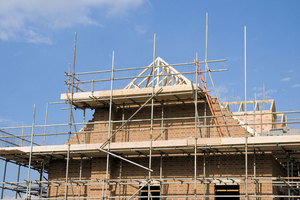Press release
Support for all of those involved in the housing market and construction industry has led to an increase in the number of completed homes.

- Stats released today show the number of new homes developers have started building have more than doubled compared to the previous quarter
- Number of completed homes almost tripled compared to previous quarter
- Decisive government action to support the housing and construction industries to reopen safely leads to housing industry bouncing back
Support for all of those involved in the housing market, from renters and buyers to builders, and measures to help the construction industry to work safely during the pandemic, has led to an increase in the number of completed homes, new housebuilding figures published today (14 January 2021) show.
The official statistics show 35,710 homes were started in July to September 2020 – a 111% increase when compared to the previous quarter – while, 45,000 homes were completed in the same period, representing a 185% increase on the previous quarter.
Today’s figures reflect the housing and construction industry’s resilience and measures they have taken to keep building sites open, in line with public health advice.
Housing Secretary Rt Hon Robert Jenrick MP said:
Today’s figures show that the number of new homes developers have started building have more than doubled compared to the previous quarter and the number of completed homes has almost tripled. This reflects the government’s commitment throughout the pandemic to support industry to enable construction sites to remain open and operate safely.
We extended planning permission deadlines and flexible working hours on sites so that builders, architects and developers have been able to continue working, while following public health advice. In turn this has protected millions of jobs, from builders, through to estate agents and carpenters.
The housing industry is key to our economic recovery, which is why we’re investing £12 billion in affordable housing, providing £400 million to build more homes on brownfield land, and investing £7.1 billion for a new National Home Building Fund over the next 4 years, unlocking up to 860,000 homes.
The statistics out today show 35,710 dwellings were started in July to September 2020. This is a 111% increase when compared to previous quarter.
45,000 dwellings were completed in July to September 2020. This is a 185% increase when compared to previous quarter.
Recent government support for home building includes:
- Setting out an overhaul of the country’s outdated planning system to deliver the high-quality, sustainable homes communities need. The proposed changes will be a boost to SME builders who will be key players in getting the country building on the scale needed to drive our economic recovery, while leading housebuilding that is beautiful and builds on local heritage and character. Recent studies show smaller firms feel the complexities of the planning process and its associated risks, delays and costs are the key challenges they face in homebuilding.
- We have set out an ambitious package of measures to ensure we build the right homes in the right places and level up opportunities across the country. This includes nearly £20 billion of investment in new housing as confirmed in the Spending Review, including over £12 billion of investment in affordable housing and our £7.1 billion National Home Building Fund.
- Our £400 million Brownfield Fund for 7 Mayoral Combined Authorities will deliver much-needed new homes on brownfield land – unlocking 26,000 high-quality homes.
- We have introduced a range of measures, such as allowing builders to seek more flexible construction site working hours with their local councils and extending certain planning permissions that would otherwise lapse, in order to keep the sector moving.
- We are also taking measures to support home buyers – for example we temporarily cut Stamp Duty Land Tax until the end of the financial year.
Published 14 January 2021
Follow this news feed: HM Government





